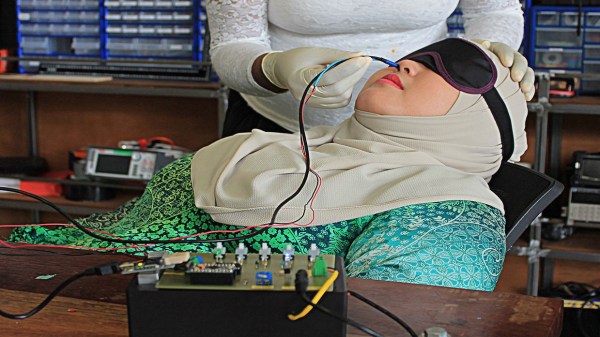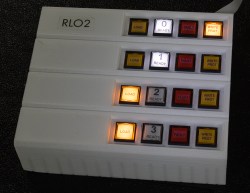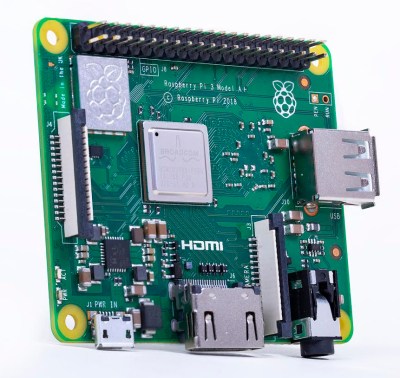We hear digital audio, we see digital video, and we feel digital haptic feedback. However, we don’t have an analog for the sense of smell. [Kasun] and his team of researchers from the Imagineering Institute in Malaysia are in the midst of changing that reality. Their project aims to transmit fragrances via electronic stimulation. Though it’s really more of a step toward creating a multi-sensory internet.
The team’s “electric smell machine” consists of a variable power supply connected to silver electrodes wrapped around an endoscopic camera. The camera is necessary to ensure contact with the user’s olfactory bulb as electric current pulses through the electrodes. The current values vary based upon the scent being replicated and are in the 0.2mA neighborhood. Early trials of the machine have revealed that around one-quarter of test subjects are able to identify the smells being replicated. They reported smells being fruity, sweet, and woody though all had a chemical-like odor attached.
The concept of “smell-o-vision” is not a new one, as it has been around longer than motion pictures with sound. Previous attempts at accompanying film and television with scent have been a result of chemical reactions. Devices from these types of experiments typically involved cartridges that would need to be replaced when the chemical substances were depleted. [Kasun]’s team approach is to avoid the chemical approach in favor of directly stimulating the olfactory receptors. Those interested in the gritty details can read the research paper on digitizing smell.
[Kasun] and his team uploaded a video on the project that you can view below. It’s all a work in progress at this point, but sign me up for a trial when they pinpoint the true essence of new car smell.
Continue reading “Researchers Seek To Create The Digital Smell Interface”


















